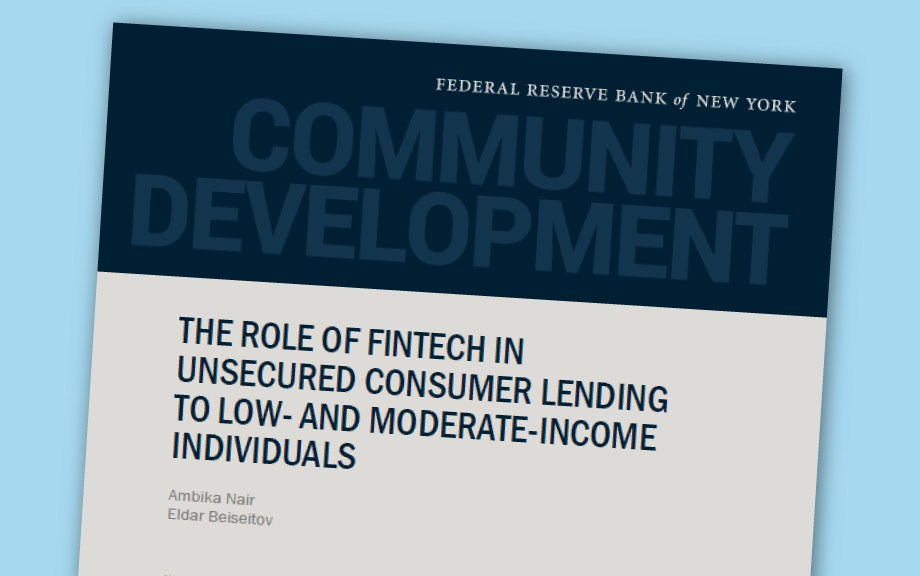
As part of its work on household financial well-being, the New York Fed's Community Development team researched the growth in unsecured consumer lending and the role fintech firms have played in that growth, particularly in lending to low- and moderate-income borrowers.
Low- and moderate-income people have historically lacked access to low-cost, short-term, and smaller- size personal loans from banks and other traditional finance institutions, relying instead on expensive products such as payday loans and bank overdraft protection. Additionally, low- and moderate-income people are not always deemed creditworthy, as many have poor, sparse, or no credit histories.
Over the past decade, however, fintech firms have introduced unsecured consumer loan products for short-term credit needs. The use of alternative data to assess creditworthiness could also expand the pool of borrowers for unsecured consumer loans.
The brief, “The Role of Fintech in Unsecured Consumer Lending to Low- and Moderate-Income Individuals,” analyzes 2017 through 2023 data from TransUnion to explore how the market for unsecured consumer loans has grown and how alternative data and underwriting have been key drivers of this growth.
Findings of the brief, which was co-authored by staff at both the New York Fed and the Federal Reserve Bank of St. Louis, include:
- Unsecured personal loan originations increased in Q1 and Q2 2022, primarily driven by fintech loans. Personal loan balances rose for all risk tiers, the credit score rankings from subprime to above prime, in the second half of 2022, with the highest growth rates in the below-prime sector.
- The rate of growth in unsecured personal lending in 2022 was faster than in some other types of consumer credit, including auto, mortgage, and student debt.
- Delinquencies for unsecured consumer credit products increased in the second half of 2022, surpassing pre-pandemic levels, and stayed steady through Q2 2023.
- Rising capital costs and increased living costs led to declines in 2023 for fintech- originated personal loans. Many fintech firms are now shifting to non-credit offerings for low- and moderate-income borrowers, such as cash-flow management and savings apps.
- Based on their outreach and an analysis of other research, the authors assert that alternative data—particularly the use of cash-flow-based underwriting and the history of utility, telecom, or rental payments—has potential to extend access to credit for low- and moderate-income consumers with sparse or no credit files.










